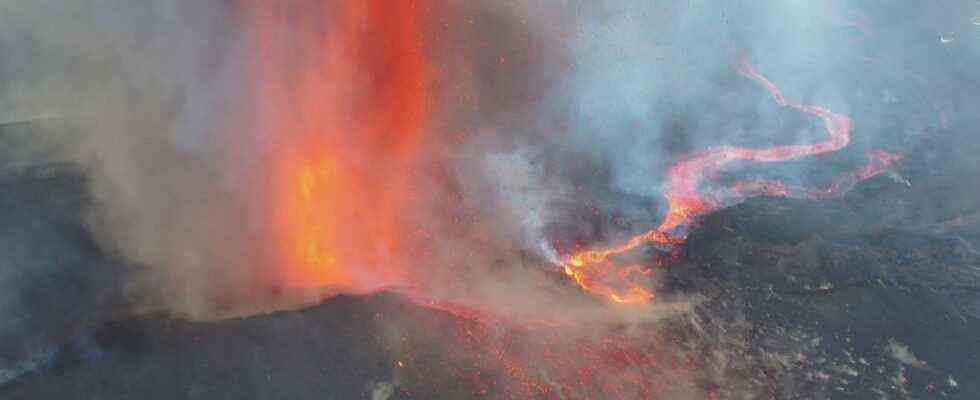Status: 07.10.2021 5:14 p.m.
The inhabitants of La Palma do not come to rest. After the volcanic eruption two and a half weeks ago, a very violent tremor has shaken the island. A new lava flow also poured over previously spared plantations.
An earthquake with a magnitude of 4.3 shook the Canary Island of La Palma. It was the most violent quake since the volcanic eruption two and a half weeks ago, said the Spanish Seismological Institute.
The quake was felt by many of the 85,000 inhabitants of La Palma, although it took place at a depth of around 35 kilometers. It therefore does not pose a great risk in terms of volcanic activity, said experts quoted by the media. Damage was initially not reported.
People brought to safety in a hurry
According to the regional authorities, a tributary of the lava was also created. Areas previously spared have been affected as a result. Plantation workers and scientists were brought to safety as quickly as possible.
According to official reports, the lava has destroyed more than 1,000 buildings since the eruption began. Around 6,000 people had to leave their homes and apartments. There is great damage to agriculture and infrastructure.
Air traffic interrupted
Because of the volcanic ash, air traffic to the island is interrupted for an indefinite period, as the airport operator Aena announced. The airlines Binter and Canaryfly had announced the day before that they would no longer fly to the island for the time being.
The only way to travel is by sea. The ferries take about four hours to the next larger neighboring island of Tenerife, where air traffic is normal.
On the island, between 60 and 80 percent of hotel bookings for October were canceled, complained the Spanish member of the European Parliament, Jose Ramon Bauza. He wrote on Twitter: “La Palma is a safe island, on which only ten percent of the area is affected by the volcano, and the travel connections are safe.”
Warning of ash splinters
Authorities called on people near the volcano to stay at home because of the ash rain and to wear FFP2 masks and goggles outdoors.
The ashes are small splinters of cold magma that the volcano has thrown into the air and that can be felt on the skin like fine pinpricks, as the newspaper “La Vanguardia” reported.
The volcano in the south of the island, which was previously less known to tourists than other Canary Islands such as Tenerife, Fuerteventura, Gran Canaria or Lanzarote, erupted on September 19th for the first time in 50 years. How long he would remain active, volcanologists could not say. It could take months, they said.

